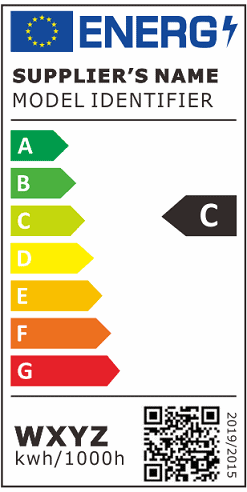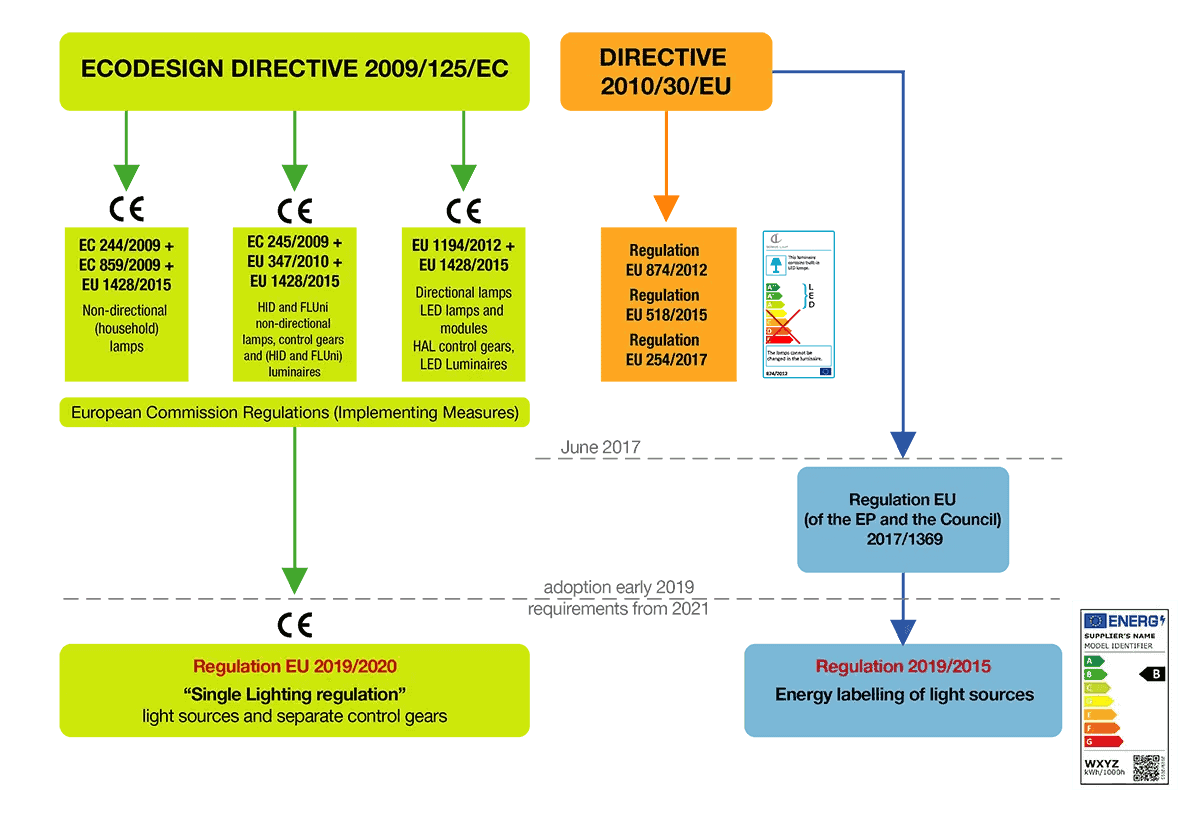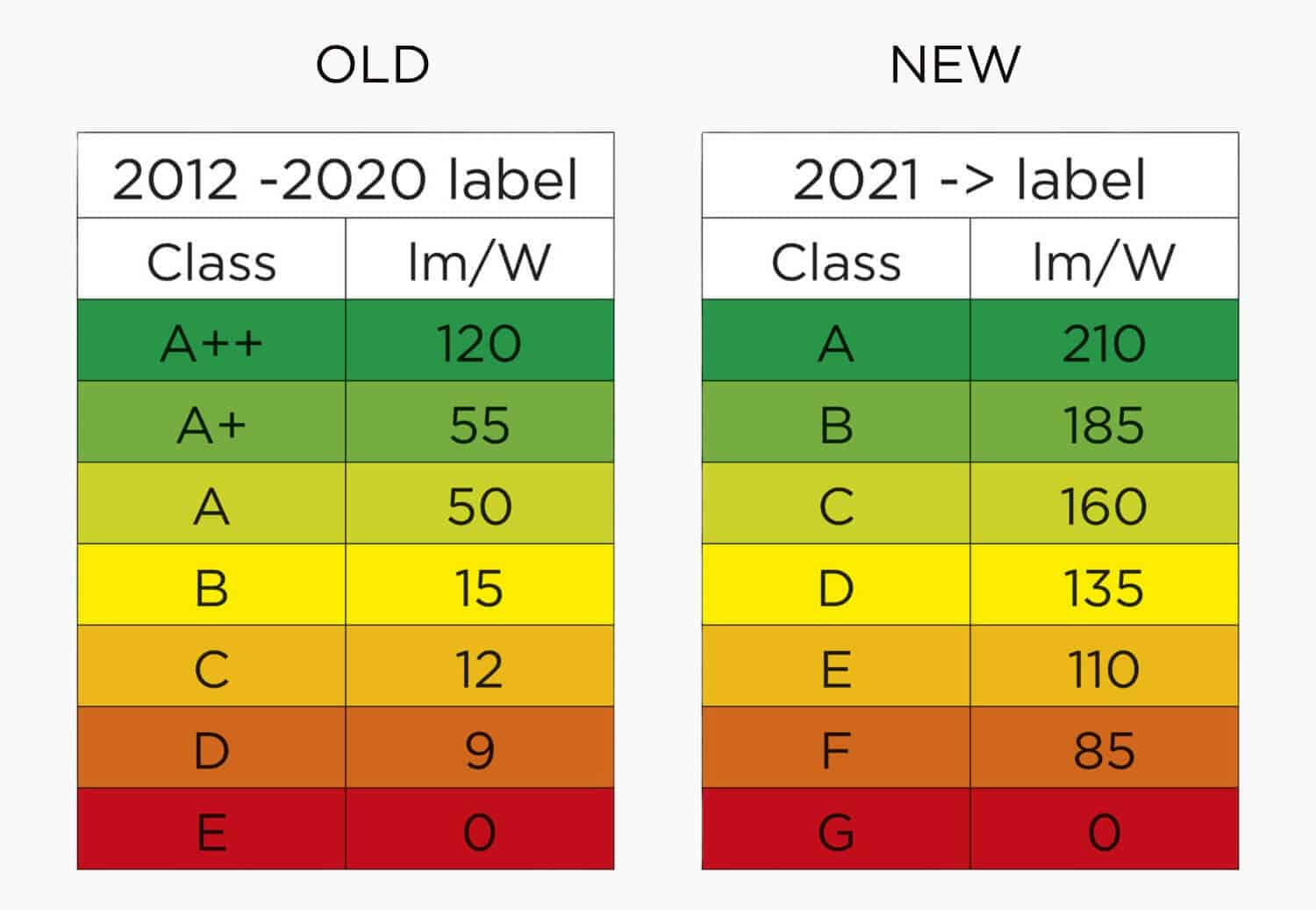New ErP Regulation Series
Various energy efficiency class available: C / D / E / F / G
Various power available: 4.5W/m, 4.8W/m, 9W/m, 9.6W/m, 14.4W/m, 19.2W/m
Various LED density available: From 70LEDs/m to 240LEDs/m, and COB(Dot-free)
Static White and Tunable White are available
CRI80 or CRI90 are available
Silicone extrusion waterproof process, IP52/IP65/IP67 available
OEM and ODM are welcome
5 years warranty

What is The New ErP Regulations?
ErP is the abbreviation of Energy-related Products. It also refers to Energy-related Products Directive (ErP) 2009/125/EC that replaced the old Energy-using Products Directive (EuP) in November 2009. The original EuP was taken into use in 2005 to fulfill the Kioto agreement requirements for reducing carbon dioxide emissions.
The ErP broadened the range of products that were covered in EuP. Earlier only directly energy-consuming (or using) products were covered. Now ErP directive also covers the products related to energy. This could be for example water-saving taps, etc.
The idea is to cover the whole product supply chain: design stage, production, transport, packaging, storage, etc.
The former ErP directives EC 244/2009, EC 245/2009, EU 1194/2012 and Energy Label directive EU 874/2012 had been taken effect for more than10 years. Recently, the European Commission has reviewed these regulations and analyzed the technical, environmental and economic aspects of lighting products as well as real-life user behavior and issued new ErP directives EU 2019/2020 and energy label directive EU 2019/2015.
What Does The New ErP Regulation Contain?
EU SLR – Single Lighting Regulation | Commission Regulation (EU) No 2019/2020 laying down ecodesign requirements for light sources and separate control gear.
EU ELR – Energy Labelling Regulation | Commission Regulation (EU) No 2019/2015 laying down energy labelling requirements of light sources.
When Will The New ErP Regulation Be Implemented?
Single Lighting Regulation | Commission Regulation (EU) No 2019/2020
Effective date: 2019/12/25
Implementation date: 2021/9/1
Old regulations and their expiration dates: (EC) 244/2009, (EC) 245/2009 & (EU) 1194/2012 expires from 2021.09.01
Energy Labelling Regulation | Commission Regulation (EU) No 2019/2015
Effective date: 2019/12/25
Implementation date: 2021/9/1
Old regulations and their expiration dates: (EU) No 874/2012 was invalid from 2021.09.01, but the clauses on the energy efficiency label of lamps and lanterns was invalid from 2019.12.25

Subject Matter And Scope of New ErP Regulation
1. This Regulation establishes ecodesign requirements for the placing on the market of
(a) light sources;
(b) separate control gears.
The requirements also apply to light sources and separate control gears placed on the market in a containing product.
2. This Regulation shall not apply to light sources and separate control gears specified in points 1 and 2 of Annex III.
3. Light sources and separate control gears specified in point 3 of Annex III shall comply only with the requirements of point 3(e) of Annex II.
Ecodesign Requirements
For the purposes of compliance and verification of compliance with the requirements of this Regulation, measurements and calculations shall be made using harmonised standards the reference numbers of which have been published for this purpose in the Official Journal of the European Union, or other reliable, accurate and reproducible methods, which take into account the generally recognised state-of-the-art.
Energy Efficiency Classes And Calculation Method
The energy efficiency class of light sources shall be determined as set out in Table 1, on the basis of the total mains efficacy ηTM, which is calculated by dividing the declared useful luminous flux Φuse (expressed in lm) by the declared on-mode power consumption Pon (expressed in W) and multiplying by the applicable factor FTM of Table 2, as follows:
ηTM = (Φuse/Pon) × FTM (lm/W).
Table 1
Energy efficiency classes of light sources
Energy efficiency class | Total mains efficacy ηΤM (lm/W) |
A | 210 ≤ ηΤM |
B | 185 ≤ ηΤM < 210 |
C | 160 ≤ ηΤM < 185 |
D | 135 ≤ ηΤM < 160 |
E | 110 ≤ ηΤM < 135 |
F | 85 ≤ ηΤM < 110 |
G | ηΤM < 85 |
Table 2
Factors FTM by light source type
Light source type | Factor FTM |
Non-directional (NDLS) operating on mains (MLS) | 1,000 |
Non-directional (NDLS) not operating on mains (NMLS) | 0,926 |
Directional (DLS) operating on mains (MLS) | 1,176 |
Directional (DLS) not operating on mains (NMLS) | 1,089 |

EPREL: What Lighting Businesses Need To Know
Working with new energy labelling is now unavoidable for the lighting industry, so it’s worth familiarising yourself with its standard requirements for its use.
New energy labels cannot be publicised prior to 1st of September 2021
ALL applicable products, either on the market or intended to be placed onto the market, must be registered in the EPREL database if intended for the EU marketplace
ALL applicable products, either on the market or intended to be placed onto the market, must have the new energy rating label, suitable for the EU market and/or UK market
Energy Related Products (ERP) must be compliant to their respective efficiency regulations – for lighting – if it’s in scope – that’s the SLR.
As of 1st September, 2021, ONLY SLR compliant products can be placed on the market, or if already placed on the market they may continue to be saleable.
Data within the EPREL database must be fully complete in order for the item to be published as live – and therefore considered saleable.
Products on the market with incomplete EPREL registrations will be deemed non-compliant by market surveillance.

